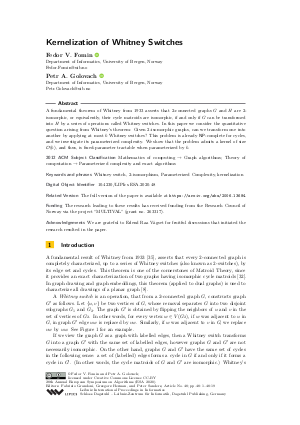LIPIcs.ESA.2020.48.pdf
- Filesize: 0.72 MB
- 19 pages


 Creative Commons Attribution 3.0 Unported license
Creative Commons Attribution 3.0 Unported license








Feedback for Dagstuhl Publishing